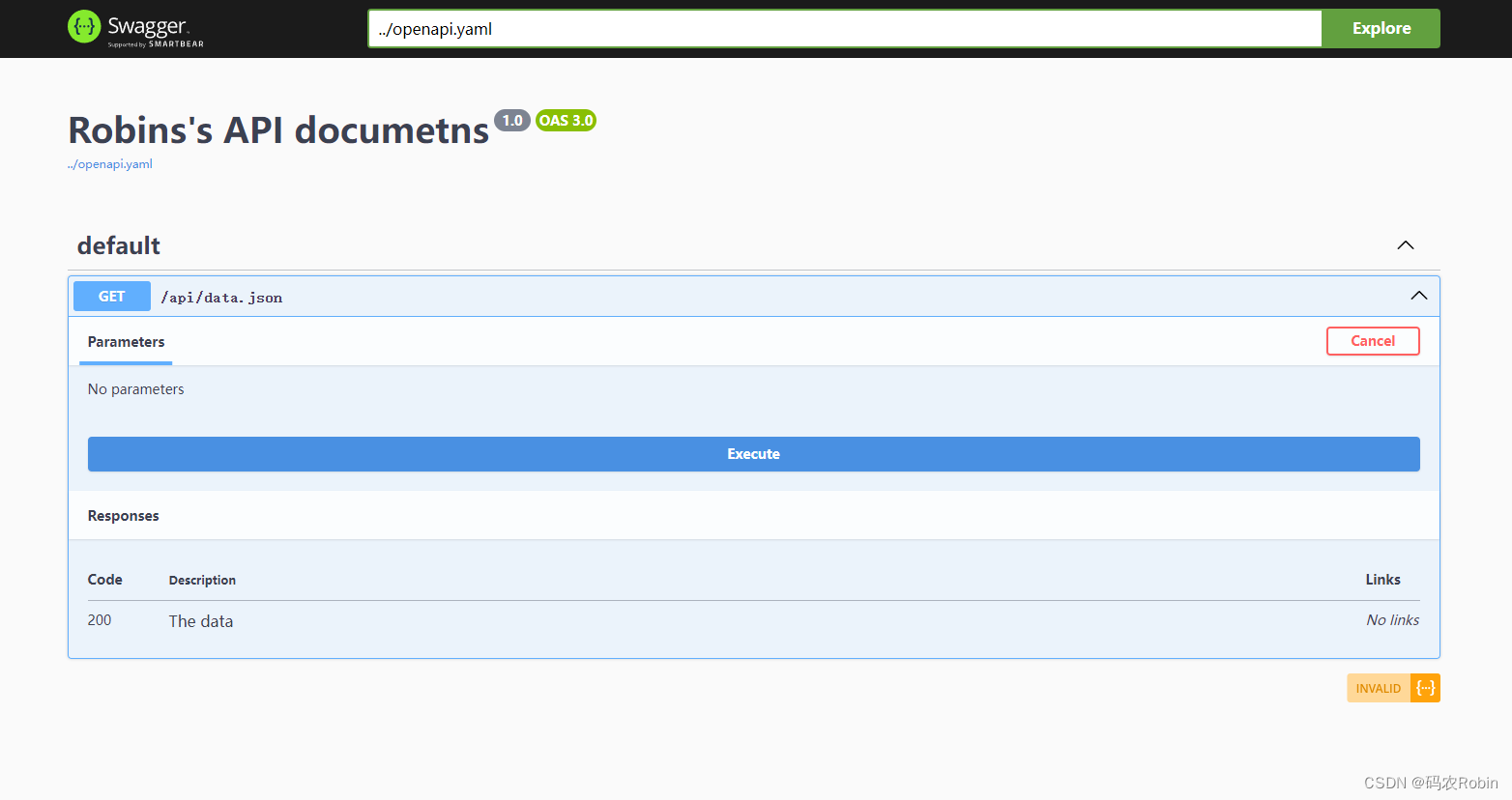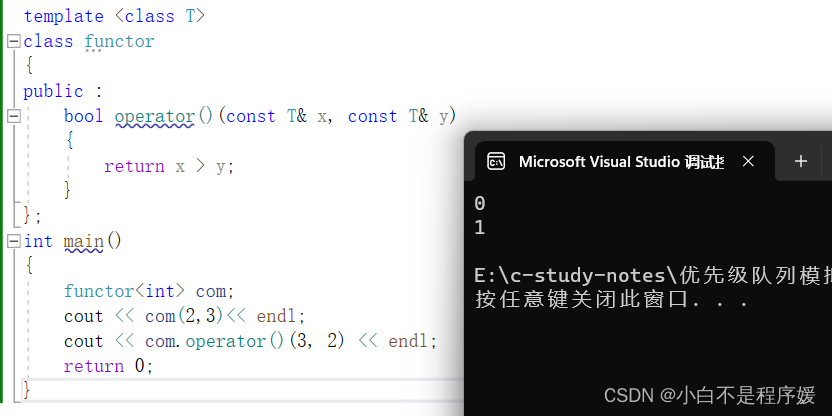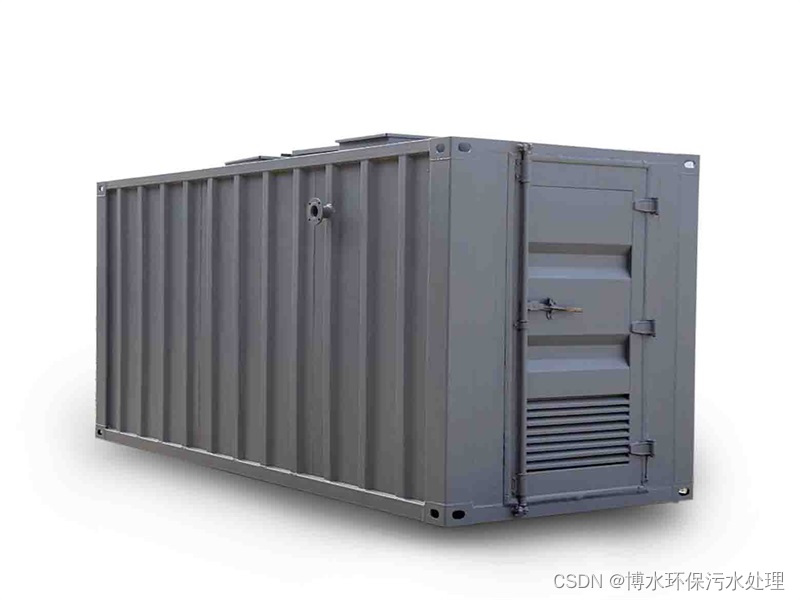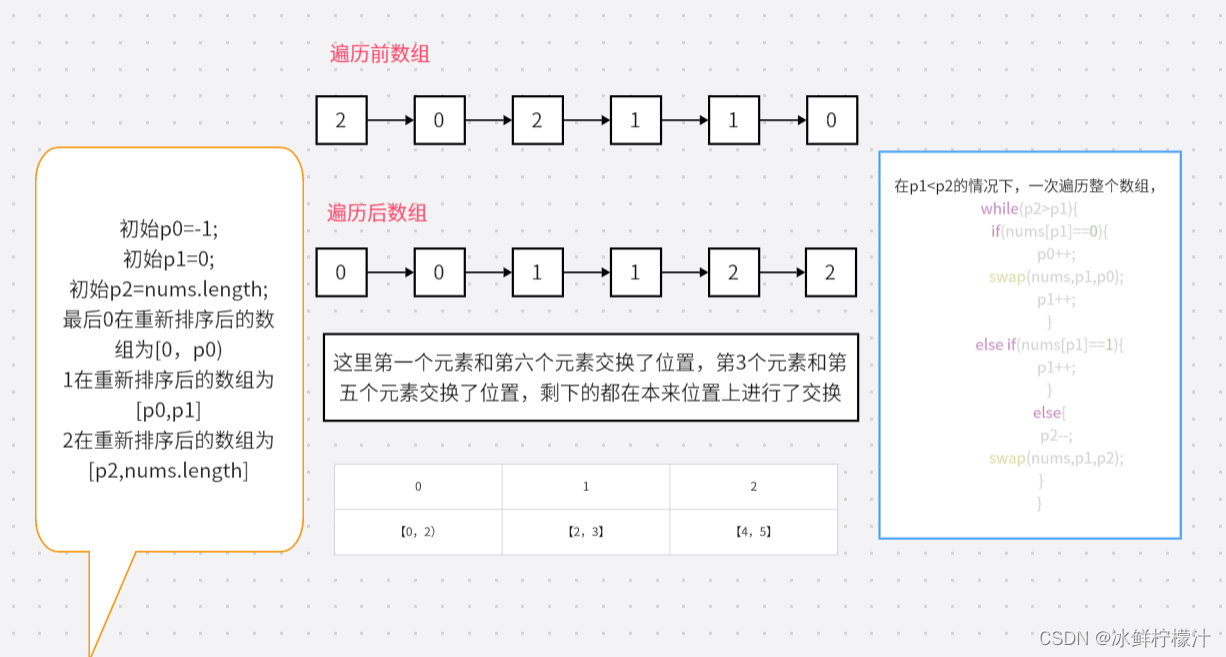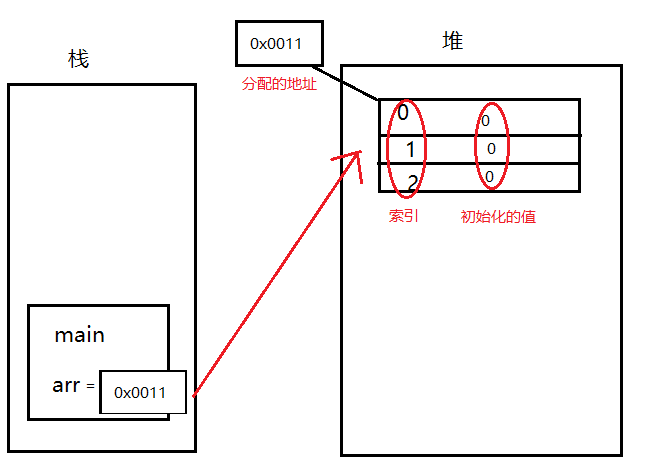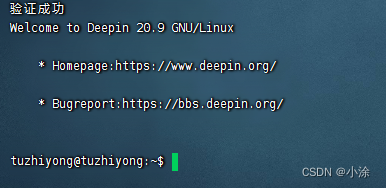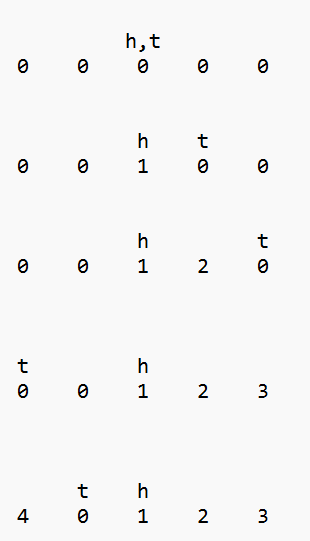CSP认证2023-09:坐标变换(其一)、坐标变换(其二)、梯度求解,python满分代码解答
目录
一、坐标变换(其一)
问题描述
输入和输出
思路
代码和结果
c++代码
python代码
二、坐标变换(其二)
问题描述
输入和输出
思路
代码和结果
c++代码
编辑 python代码
改进
c++代码
python代码
三、梯度求解
问题描述
输入和输出
思路
代码和结果
一、坐标变换(其一)
问题描述

输入和输出

输入
3 2
10 10
0 0
10 -20
1 -1
0 0输出
21 -11
20 -10思路
定义一个起始原点坐标(0,0),将n个操作依次累加,获得移动后的坐标(x_move,y_move)。接着输入m行坐标(x_res,y_res)时,直接加上移动后的坐标(x_move,y_move)输出结果即可。
代码和结果
c++代码
#include<iostream>
using namespace std;
int main() {int n, m;cin >> n >> m;int move_x = 0;int move_y = 0;for (int i = 0; i < n; i++) {//m行数据int x,y;cin >> x>>y;move_x += x;move_y += y; }for (int j = 0; j < m; j++) {int input_x, input_y;cin >> input_x >> input_y;cout << input_x + move_x << " " << input_y + move_y << endl;}
}![]()
python代码
n,m=list(map(int,input().split()))
x_move ,y_move= 0,0
for i in range(n):x_1,y_1 = list(map(int,input().split()))x_move+=x_1y_move+=y_1
for j in range(m):x_res, y_res = list(map(int, input().split()))x_res += x_movey_res += y_moveprint(x_res,' ',y_res)![]()
二、坐标变换(其二)
问题描述
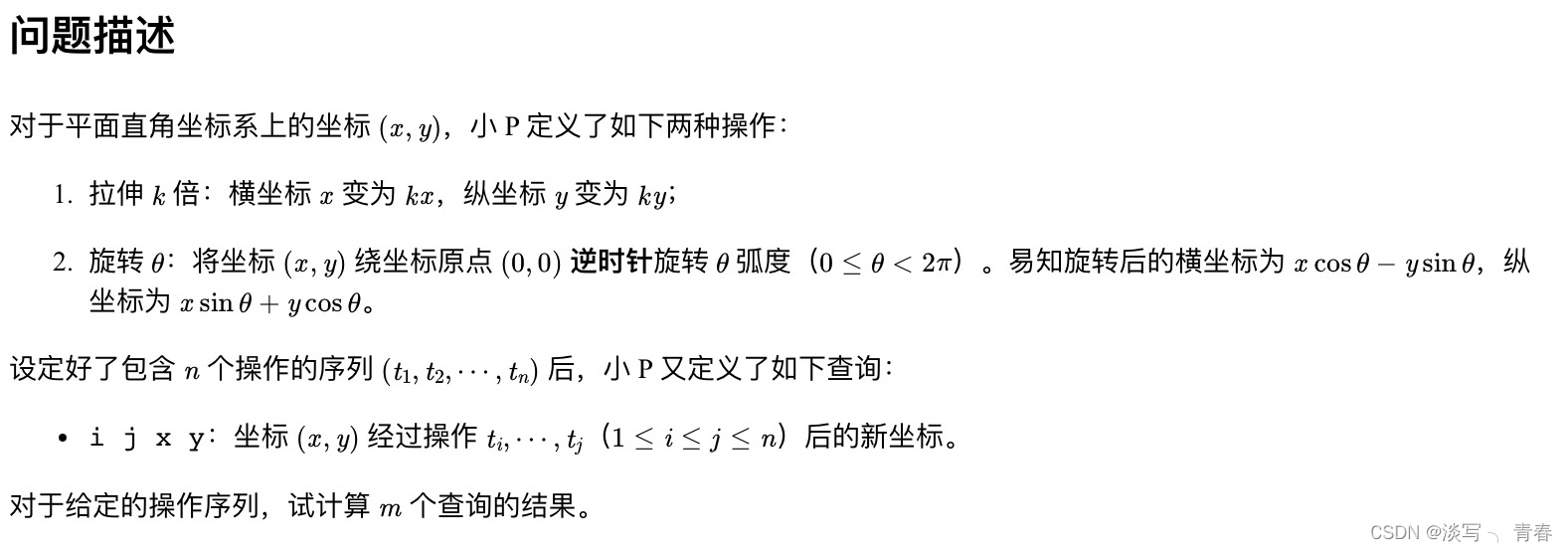
输入和输出
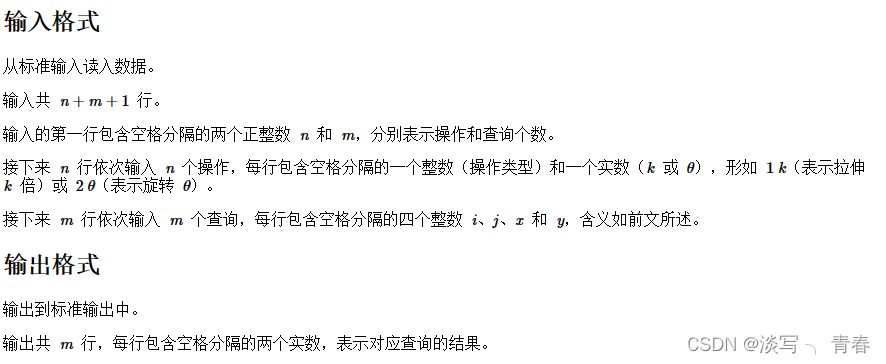 输入
输入
10 5
2 0.59
2 4.956
1 0.997
1 1.364
1 1.242
1 0.82
2 2.824
1 0.716
2 0.178
2 4.094
1 6 -953188 -946637
1 9 969538 848081
4 7 -114758 522223
1 9 -535079 601597
8 8 159430 -511187输出
-1858706.758 -83259.993
-1261428.46 201113.678
-75099.123 -738950.159
-119179.897 -789457.532
114151.88 -366009.892思路
1、首先将利用两个数组op和value将操作和其对应的值存起来
2、在输入每一个查询时,找到数组op和value的起始位置和终止位置
3、从起始位置和终止位置进行运算即可
代码和结果
这里给出c++代码和python代码
c++代码
#include<iostream>
#include<math.h>
#include<iomanip>
using namespace std;int main(){cout.setf(ios::fixed);cout.precision(3); // 精度为输出小数点后3位int n, m;cin >> n >> m;static int op[100001];static double value[100001];for (int i = 1; i <= n; i++) {int op1;double value1;cin >> op1 >> value1;op[i] = op1;value[i] = value1;}for (int j = 0; j < m; j++) {int op_start, op_end;double value1, value2;cin >> op_start >> op_end >> value1 >> value2;for (int op_index = op_start; op_index <= op_end; op_index++) {//对于第op_index进行以下操作int operation1 = op[op_index];//进行缩放或旋转double v1 = value[op_index];//if (operation1 == 1) {value1 = value1 * v1;value2 = value2 * v1;}else {double value1_copy = value1;value1 = value1 * cos(v1) - value2 * sin(v1);value2 = value1_copy * sin(v1) + value2 * cos(v1);}}cout <<value1 << " " << value2 << endl;}
}python代码
import mathn,m = list(map(int,input().split()))
op = [0]
value = [0.]
for i in range(1,n+1):operate, v = input().split()op.append(int(operate))value.append(float(v))
for i in range(m):op_start_s,op_end_s,value1_s,value2_s= input().split()op_start = int(op_start_s)op_end = int(op_end_s)value1 = float(value1_s)value2 = float(value2_s)for j in range(op_start,op_end+1):#对于第op_index进行以下操作operation1 = op[j] # 进行缩放或旋转v1 = value[j]if operation1 == 1:value1 = value1 * v1value2 = value2 * v1else:value1_copy = value1 #这一步很重要value1 = value1 * math.cos(v1) - value2 * math.sin(v1)value2 = value1_copy * math.sin(v1) + value2 * math.cos(v1)print(value1,' ',value2)![]()
改进
然而由于查询过程中存在重复的查询,导致时间复杂度过高而只得到了80分。
通过观察发现,题目让我们求的是给定坐标经过op_start到op_end操作之后的结果,又通过操作内容可知,只包含旋转和坐标缩放这两种操作。从中可以得到以下结论:
首先,这两种操作是不受彼此干扰的;其次,旋转和缩放是可以累积计算的。
因此,我们可以通过两个数组记录从1到n个操作的结果,每一步操作是旋转操作和缩放操作的累积。首先计算从op_start到op_end旋转的角度,只需要用op_end旋转的角度减去op_start的角度;其次计算从op_start到op_end缩放的倍数,只需要用op_end缩放的倍数除以op_start缩放的倍数。
c++代码
//存在的问题:考虑到不能每次去遍历操作,因为这样会导致复杂度很高
//解决办法:将操作数组记录下来,因为缩放和旋转是无关的,所以可以使用两个数组存放;旋转是循环的可以实现累加,缩放也是可以累乘的
#include<iostream>
#include<math.h>
#include<iomanip>
using namespace std;
#define pai 3.14159265358979323846
int main() {cout.setf(ios::fixed);cout.precision(3); // 精度为输出小数点后3位int n, m;cin >> n >> m;//static int op_scale[100001];//分开存放两个操作//static int op_xuanzhuan[100001];static double value_scale[100001]={1};static double value_xuanzhuan[100001]={0};//累积缩放值double scale = 1;//累积旋转值,需要mod 2paidouble xuanzhuan = 0;for (int i = 1; i <= n; i++) {//现在存放的就不是第i个操作了,而是前i个操作的累积int op1;double value1;cin >> op1 >> value1;if (op1 == 1) {//同时记录到上一轮的旋转value_xuanzhuan[i] = xuanzhuan;scale = scale * value1;value_scale[i] = scale;}else {//同时记录到上一轮的缩放value_scale[i] = scale;xuanzhuan = xuanzhuan + value1;//先不用取余,最后结果取余就行value_xuanzhuan[i] = xuanzhuan;}}for (int j = 0; j < m; j++) {int op_start, op_end;double value1, value2;cin >> op_start >> op_end >> value1 >> value2;//看op_start的缩放是多少,op_end的缩放系数是多少,除一下就是缩放的系数了double op_scale_start = value_scale[op_start-1];double op_scale_end = value_scale[op_end];double op_xuanzhuan_start = value_xuanzhuan[op_start-1];double op_xuanzhuan_end = value_xuanzhuan[op_end];//首先计算缩放了多少double scale_start_end = op_scale_end / op_scale_start;double xuanzhuan_start_end = fmod((op_xuanzhuan_end - op_xuanzhuan_start), 2 * pai);//op_xuanzhuan_start操作也是进行的double value1_copy = value1;value1 = scale_start_end*(value1 * cos(xuanzhuan_start_end) - value2 * sin(xuanzhuan_start_end));value2 = scale_start_end*(value1_copy * sin(xuanzhuan_start_end) + value2 * cos(xuanzhuan_start_end));cout << value1 << " " << value2 << endl;}return 0;}![]()
python代码
import math
n,m = list(map(int,input().split()))
#累积缩放值
scale = 1
#累积旋转值,需要mod 2pai
xuanzhuan = 0
value_scale = [1]
value_xuanzhuan = [0]
for i in range(1,n+1):#现在存放的就不是第i个操作了,而是前i个操作的累积op1_,value1_ = input().split()op1 = int(op1_)value1 = float(value1_)if op1 == 1:#同时记录到上一轮的旋转value_xuanzhuan.append(xuanzhuan)scale = scale * value1value_scale.append(scale)else:#同时记录到上一轮的缩放value_scale.append(scale)xuanzhuan = xuanzhuan + value1#先不用取余,最后结果取余就行value_xuanzhuan.append(xuanzhuan)
for j in range(m):op_start_s, op_end_s, value1_s, value2_s = input().split()op_start = int(op_start_s)op_end = int(op_end_s)value1 = float(value1_s)value2 = float(value2_s)#看op_start的缩放是多少,op_end的缩放系数是多少,除一下就是缩放的系数了op_scale_start = value_scale[op_start-1]op_scale_end = value_scale[op_end]op_xuanzhuan_start = value_xuanzhuan[op_start-1]op_xuanzhuan_end = value_xuanzhuan[op_end]#首先计算缩放了多少scale_start_end = op_scale_end / op_scale_startxuanzhuan_start_end = (op_xuanzhuan_end - op_xuanzhuan_start)%(2 * math.pi)#op_xuanzhuan_start操作也是进行的value1_copy = value1value1 = scale_start_end*(value1 * math.cos(xuanzhuan_start_end) - value2 * math.sin(xuanzhuan_start_end))value2 = scale_start_end*(value1_copy * math.sin(xuanzhuan_start_end) + value2 * math.cos(xuanzhuan_start_end))print(value1, ' ', value2)三、梯度求解
问题描述
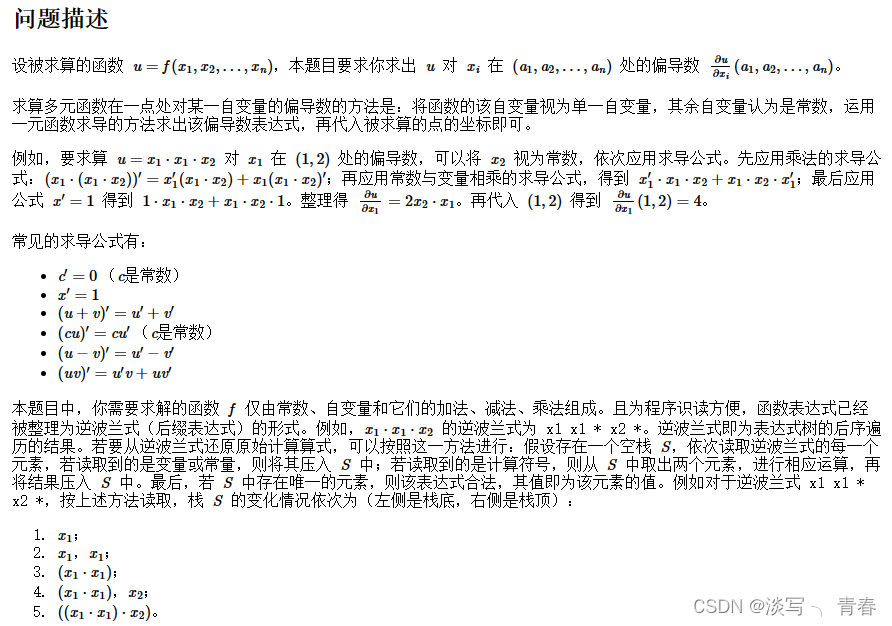
输入和输出
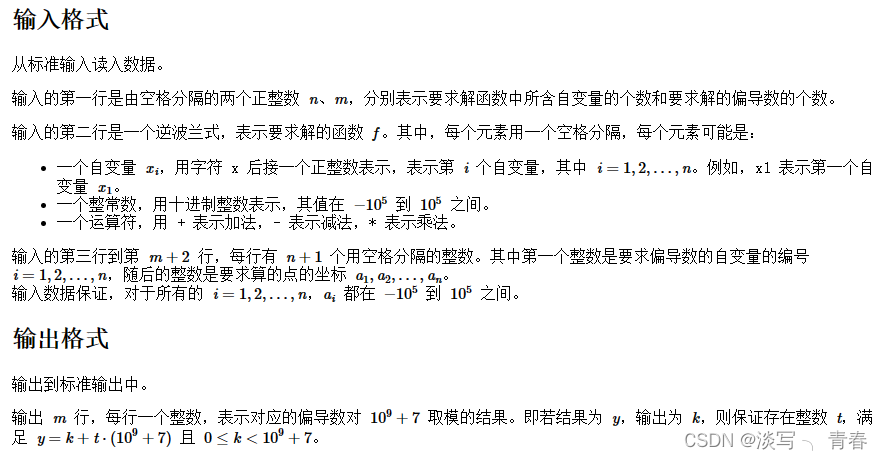
输入
2 2
x1 x1 x1 * x2 + *
1 2 3
2 3 4输出
15
3思路
本题是一道求偏导的题,计算过程很清晰,但是实现起来还是比较麻烦的。接下来简要介绍一下代码的思路:
1、首先,对于每一次输入,将每一个自变量的值存储起来,注:将逆波兰式的多项式使用copy()进行复制,防止后续操作修改了其中的内容。
for _ in range(m):data = list(map(int,input().split()))bianliang_j = data[0]poly_copy_list = poly_list.copy()value_list = data[1:]#从自变量1到自变量n的值bianliang_value_dict = {}#变量值字典for i in range(len(value_list)):if i+1!=int(bianliang_j):x_i = 'x'+str(i+1)bianliang_value_dict[x_i] = str(value_list[i])else:bianliang_j_value = int(value_list[i])2、将多项式中的不要求偏导的自变量替换成其值,这样就仅包含一个自变量,可以使用字典存储多项式。
#复制多项式,将多项式中的不要求偏导的自变量替换成其值 for i in range(len(poly_copy_list)):if poly_copy_list[i] in bianliang_value_dict.keys():poly_copy_list[i]=bianliang_value_dict[poly_copy_list[i]]class mul_poly():#对于一个仅包含一个变量的多项式,仅存储其系数和次数即可,但是考虑到稀疏性,得用字典来存储def __int__(self):self.poly = {}#键表示的是多项式的次数,值表示系数3、开始处理偏导,因为逆波兰式可能只有一项(数值或变量),需要判断一下。如果只有一项,直接用字典形式表示多项式;否则利用栈读取逆波兰式。
- 在处理逆波兰式时,为了简化运算符的判断,将减法用加法、乘法、系数-1进行表示。
- 字典形式的多项式的计算方法为: 在乘法中,两重循环多项式a和多项式b的次数项(键),进行次数(键)相加,系数(值)相乘的操作;多项式加法为,单次循环多项式b的次数(键),如果多项式a中没有,则将多项式b的键值对添加到多项式a中;否则将多项式b的系数(值)和多项式a的系数(值)作和,即可完成加法运算。
if len(poly_copy_list)==1:#只含一个数值或变量temp = trans_mul_poly(poly_copy_list[0]).polyelse:temp = piandao(poly_copy_list)def piandao(poly):''':param-poly: 列表形式的多项式:return:'''new_poly = []for ele in poly:#a-b = a+ (-1 *)b 减法运算变成加法和乘法if ele=='-':#处理减法运算new_poly.append('-1')new_poly.append('*')new_poly.append('+')else:new_poly.append(ele)poly_stack =[]# #创建一个多项式字典,用以记录多项式加法和乘法的计算结果#通过逆波兰式读取结果for ele in new_poly:if ele not in ['+','*']:#如果不是运算符,则加入poly_stack中poly_stack.append(ele)else:b = poly_stack.pop()a = poly_stack.pop()#a和b初始只可能是 数值(可正可负)、自变量x_1 、之后存在(x_1的多项式)b_mul_poly = trans_mul_poly(b)a_mul_poly = trans_mul_poly(a)#转换成mul_poly对象res = compute(a_mul_poly,b_mul_poly,ele)poly_stack.append(res)result = poly_stack.pop()return result.polydef compute(a_mul_poly,b_mul_poly,ele):''':param a_mul_poly::param b_mul_poly::param ele: 运算符,取值为"+"或"*":return:'''if ele=='*':res = mul_poly()res.poly = {}#对应位置的系数相乘for a in a_mul_poly.poly.keys():for b in b_mul_poly.poly.keys():# 次数相加,系数相乘a_b_sum_cishu = a+ba_b_sum_xishu = a_mul_poly.poly[a]*b_mul_poly.poly[b]if a_b_sum_cishu not in res.poly.keys():res.poly[a_b_sum_cishu] = a_b_sum_xishuelse:res.poly[a_b_sum_cishu] += a_b_sum_xishureturn reselse:# 对应位置的系数相加for b_cishu in b_mul_poly.poly.keys():if b_cishu not in a_mul_poly.poly.keys():a_mul_poly.poly[b_cishu] = b_mul_poly.poly[b_cishu]else:a_mul_poly.poly[b_cishu] += b_mul_poly.poly[b_cishu]return a_mul_poly4、获得结果
res = 0 for key in temp.keys():#键为多项式次数,值为系数if key == 0:#常数项求偏导为0continueelif key == 1: #存在0的0次方res+=temp[key]else:res+=key*temp[key]*bianliang_j_value**(key-1) print(int(res%(10**9+7)))
代码和结果
class mul_poly():#对于一个仅包含一个变量的多项式,仅存储其系数和次数即可,但是考虑到稀疏性,得用字典来存储def __int__(self):self.poly = {}#键表示的是多项式的次数,值表示系数
def compute(a_mul_poly,b_mul_poly,ele):''':param a_mul_poly::param b_mul_poly::param ele: 运算符,取值为"+"或"*":return:'''if ele=='*':res = mul_poly()res.poly = {}#对应位置的系数相乘for a in a_mul_poly.poly.keys():for b in b_mul_poly.poly.keys():# 次数相加,系数相乘a_b_sum_cishu = a+ba_b_sum_xishu = a_mul_poly.poly[a]*b_mul_poly.poly[b]if a_b_sum_cishu not in res.poly.keys():res.poly[a_b_sum_cishu] = a_b_sum_xishuelse:res.poly[a_b_sum_cishu] += a_b_sum_xishureturn reselse:# 对应位置的系数相加for b_cishu in b_mul_poly.poly.keys():if b_cishu not in a_mul_poly.poly.keys():a_mul_poly.poly[b_cishu] = b_mul_poly.poly[b_cishu]else:a_mul_poly.poly[b_cishu] += b_mul_poly.poly[b_cishu]return a_mul_poly
def trans_mul_poly(data):#将数据转成mul_poly对象if isinstance(data,mul_poly):return dataelse:res = mul_poly()res.poly = {}if 'x' in data:#是x自变量res.poly[1] = 1else:#是数值res.poly[0]=int(float(data)%(10**9+7))return resdef piandao(poly):''':param-poly: 列表形式的多项式:return:'''new_poly = []for ele in poly:#a-b = a+ (-1 *)b 减法运算变成加法和乘法if ele=='-':#处理减法运算new_poly.append('-1')new_poly.append('*')new_poly.append('+')else:new_poly.append(ele)poly_stack =[]# #创建一个多项式字典,用以记录多项式加法和乘法的计算结果#通过逆波兰式读取结果for ele in new_poly:if ele not in ['+','*']:#如果不是运算符,则加入poly_stack中poly_stack.append(ele)else:b = poly_stack.pop()a = poly_stack.pop()#a和b初始只可能是 数值(可正可负)、自变量x_1 、之后存在(x_1的多项式)b_mul_poly = trans_mul_poly(b)a_mul_poly = trans_mul_poly(a)#转换成mul_poly对象res = compute(a_mul_poly,b_mul_poly,ele)poly_stack.append(res)result = poly_stack.pop()return result.poly
n,m=list(map(int,input().split()))
poly_list = input().split()
for _ in range(m):data = list(map(int,input().split()))bianliang_j = data[0]poly_copy_list = poly_list.copy()value_list = data[1:]#从自变量1到自变量n的值bianliang_value_dict = {}#变量值字典for i in range(len(value_list)):if i+1!=int(bianliang_j):x_i = 'x'+str(i+1)bianliang_value_dict[x_i] = str(value_list[i])else:bianliang_j_value = int(value_list[i])#复制多项式,将多项式中的不要求偏导的自变量替换成其值for i in range(len(poly_copy_list)):if poly_copy_list[i] in bianliang_value_dict.keys():poly_copy_list[i]=bianliang_value_dict[poly_copy_list[i]]if len(poly_copy_list)==1:#只含一个数值或变量temp = trans_mul_poly(poly_copy_list[0]).polyelse:temp = piandao(poly_copy_list)res = 0for key in temp.keys():#键为多项式次数,值为系数if key == 0:#常数项求偏导为0continueelif key == 1: #存在0的0次方res+=temp[key]else:res+=key*temp[key]*bianliang_j_value**(key-1)print(int(res%(10**9+7)))![]()
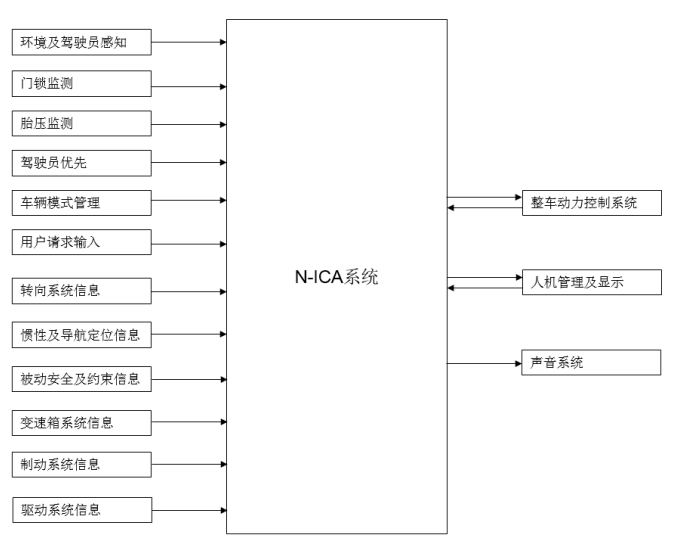
![[Java]线程详解](https://img-blog.csdnimg.cn/b9e8ea84b84f49f48dfa4c9c1b55c65a.png)
